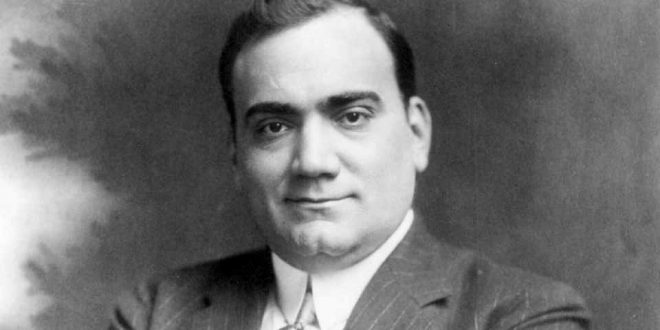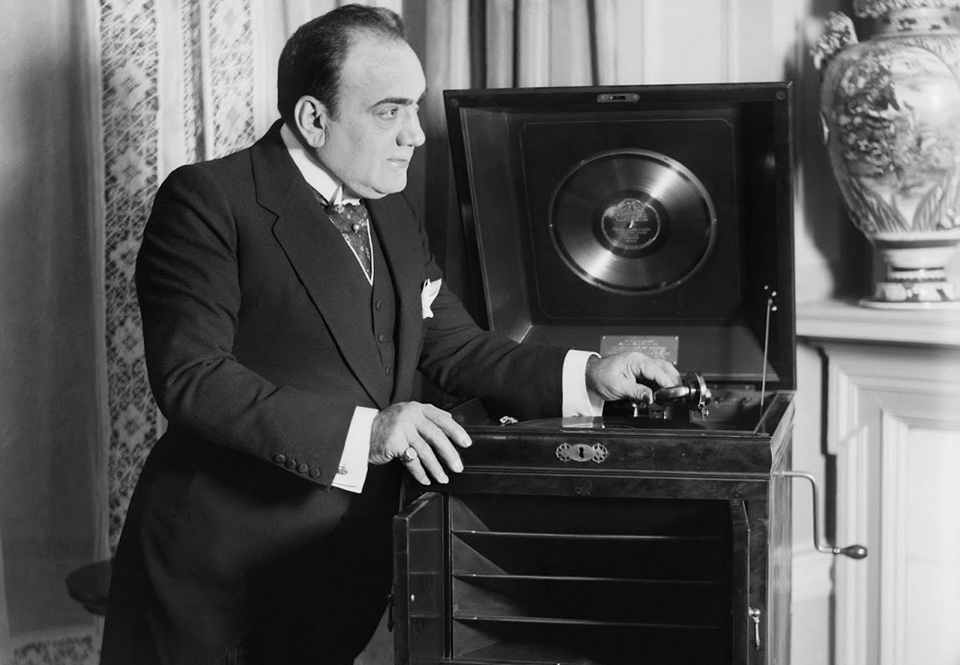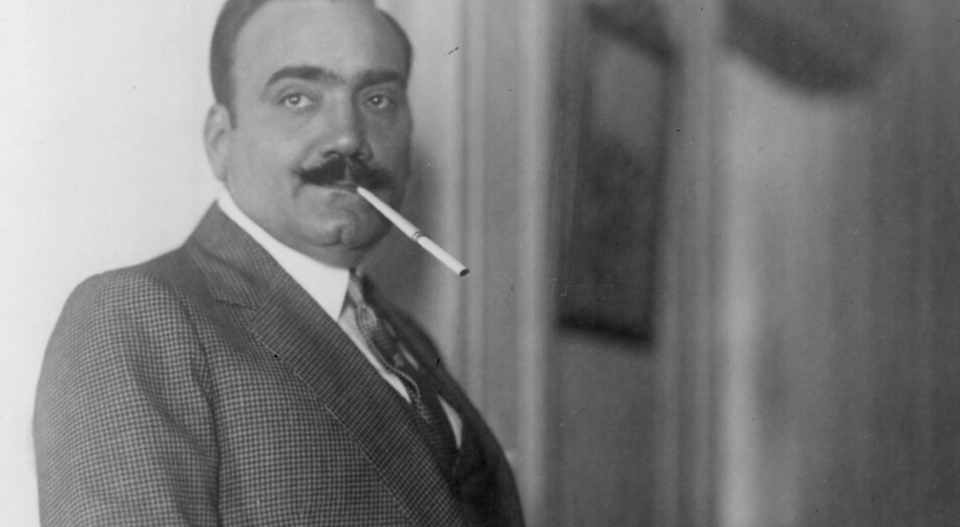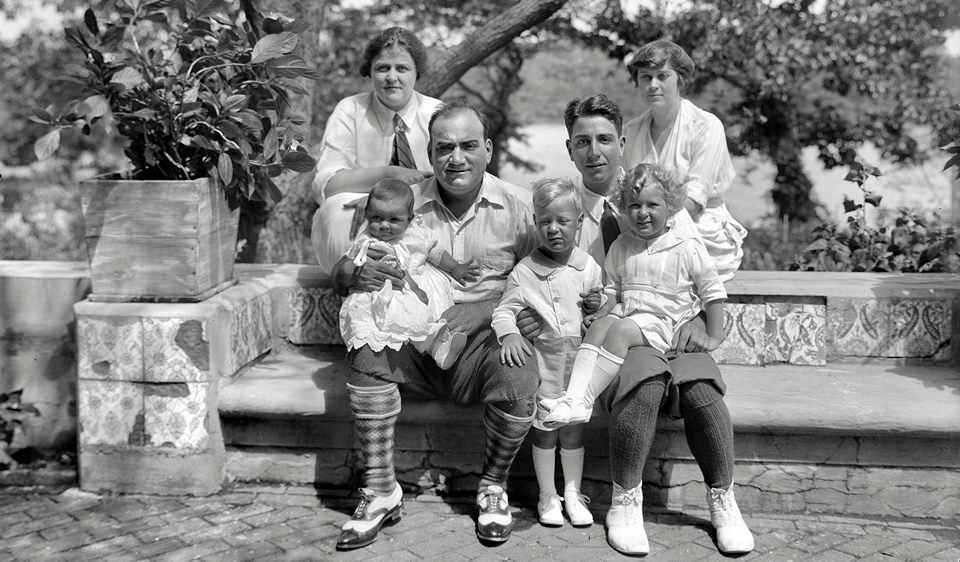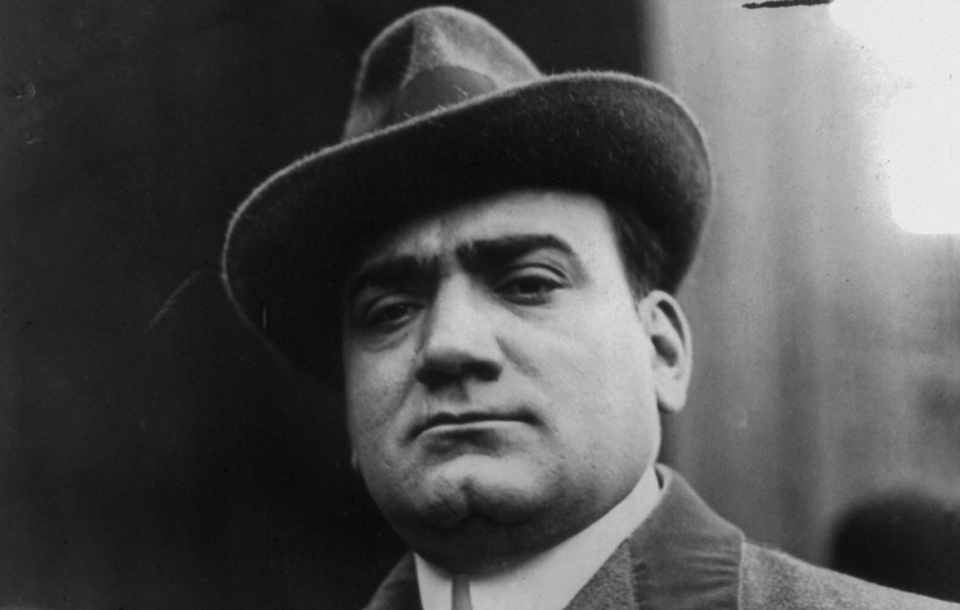Enrico Caruso was a world-renowned Italian opera singer and tenor. He was born as the third child in a poor family, where he was raised along with six other siblings. Through his talent and hard work, he managed to escape poverty and surrounded himself and his loved ones with the luxuries of a wealthy life.
Page Contents
Biography
Enrico was born in a poor industrial district of Naples on February 25, 1873, in a two-story house. After completing elementary school, the boy did not want to pursue further education and instead joined the choir of a small local church. He enjoyed singing so much that he didn’t become an engineer as his parents, Marcello Caruso and Anne-Marie Caruso, had hoped. Enrico wanted to study music.
When he turned 15, his mother passed away suddenly, and the young man had to share the financial responsibilities of the family with his father. He found work in a workshop where Marcello worked as well, but he never stopped singing. Churchgoers admired his beautiful voice and occasionally requested serenades for their loved ones, for which wealthy clients generously compensated him.
Success motivated the young man to seek new opportunities for earning money, and he began performing religious songs directly on the streets. For a long time, this served as a valuable support for his large family.
Caruso received minimal musical education. He enrolled in evening school and studied under pianist Skirardi and Maestro de Lyutno. Baritone Missiano also taught Enrico how to perform several roles.
The Path to Success
Enrico Caruso’s path to success began when his songs were accidentally heard by Guglielmo Vergine, a vocal teacher at the School of Vocal Arts. This happened during a performance of “The Brigands” by Michele Fasanaro, where Caruso sang a role chosen for him by his teacher, Bronzetti. The opera took place in a small church theater, which the young Caruso continued to attend.
Vergine, upon recognizing the young talent, convinced the boy’s father to send his son to the Neapolitan School of Singing (also known as the Temple of Bel Canto). The father agreed, although he didn’t have high hopes for success. Now he didn’t have to feed an extra mouth, and his son happily began studying the art of music.
After some time, Vergine introduced the young Caruso to the renowned and influential operatic tenor, Masini. The singer appreciated the range and power of the young talent but warned that natural gift required a lot of hard work. Caruso yearned for fame, recognition, and wealth, so he worked tirelessly throughout his life, becoming one of the greatest tenors of his time.
Key Milestones in His Biography Include:
- 1894: First performance at the Teatro Nuovo in Naples.
- From 1900: Regular appearances at Milan’s Teatro La Scala for a year.
- 1902: Debut at Covent Garden in London.
- From 1903: Solo performances at the Metropolitan Opera in New York for 17 years.
- From 1898: Numerous international concert tours.
Best Roles
The legendary tenor effortlessly tackled any role. Enrico Caruso’s artistry reveals both his lyrical and tragic sides. He was the first to perform the roles of Federico in “L’arlesiana” by Francesco Cilea in 1897, Loris in “Fedora” by Umberto Giordano in 1898, and Johnson in “La fanciulla del West” by Giacomo Puccini in 1910.
The following roles are rightfully considered his best:
- The Duke in “Rigoletto” by Giuseppe Verdi;
- Manrico in “Il trovatore” by Verdi;
- Radames in “Aida” by Verdi;
- Nemorino in “L’elisir d’amore” by Gaetano Donizetti;
- Faust in “Mefistofele” by Arrigo Boito;
- Canio in “Pagliacci” by Ruggero Leoncavallo;
- Turiddu in “Cavalleria rusticana” by Pietro Mascagni;
- Rudolf in “La Bohème” by Giacomo Puccini;
- Cavaradossi in “Tosca” by Puccini;
- des Grieux in “Manon Lescaut” by Puccini;
- José in “Carmen” by Georges Bizet;
- Eleazar in “La Juive” by Fromental Halévy.
During concerts, his renditions of Neapolitan songs were particularly touching and tender.
Caruso Personal Life
The enchanting voice of a short, strong man with magnificent mustaches made an indelible impression on women. At the dawn of his career, Enrico was on the verge of marrying the daughter of the theater director he worked for. But the wedding never took place as the groom fled from the altar with a ballerina from the same theater.
Enrico Caruso’s first civil wife was opera singer Ada Giachetti, who was ten years older than him. Ada gave her husband four sons, but only two survived: Rodolfo and Enrico, named after the main characters of the opera “Rigoletto.” Giachetti sacrificed her career for the sake of family happiness, but the restless Enrico did not wish to be an exemplary husband.
He did not form close relationships with other women but continued to flirt right and left. After 11 years, Ada left her husband and ran away with their family driver. Enrico was terribly enraged and started dating his unfaithful wife’s younger sister. Instead of reconciling, Giachetti filed a lawsuit against Caruso, demanding the return of “stolen” valuables. The case ended in a settlement, with the former spouse taking on the obligation of providing the family with a substantial monthly allowance.
Caruso’s first official wife at the age of 45 was 25-year-old Dorothy Park Benjamin, the daughter of an American millionaire.
The girl’s father did not acknowledge his son-in-law and disinherited his daughter after the wedding. But Enrico loved Dorothy, who soon gave birth to their daughter, Gloria. According to family friends, Caruso earnestly asked his wife to gain weight to the point where no other man would look at her.
Death
A year later, in 1920, the happy father fell seriously ill after a car accident and had to return to Italy. On August 2, 1921, he succumbed to pleurisy and passed away. His funeral took place at the San Francesco di Paola Church. The doors of the church basilica were opened by the king himself in honor of the deceased. The funeral procession of the legendary singer was attended by over 80,000 people.
Maestro was laid to rest in a crystal coffin, and for 15 years, his fans had the opportunity to see the great singer after his death. Then his body was laid to rest in the ground. With the funds provided by the singer’s admirers, a huge wax candle was crafted, which was promised to be lit annually in memory of the departed in front of the Madonna of Pompeii. According to calculations, the candles should last for 500 years.
Interesting Facts about Enrico Caruso
- Enrico’s parents had 18 children, including him, but unfortunately, 12 of them passed away in infancy.
- At birth, Enrico was given the name “Errico” by his parents, as it resonated with the Neapolitan dialect. However, his teacher, Verghini, advised him to change it to Enrico.
- After his mother’s death, Caruso sang daily in the church choir, sincerely believing that she could hear him from there.
- Following his performance as the old man’s son in Giuseppe Morelli’s play “L’Amico Francesco” (“The Friend Francesco”), Caruso, who showed promising talent despite being played by a 60-year-old tenor, was invited to tour Cairo. It was there that he earned his first significant amount of money.
- Sometimes, he had to sing his parts without rehearsal. He would attach a sheet of lyrics to the back of the performer in front of him and sing along.
- His first earnings were spent on entertainment, women, and wine. He returned to the hotel in the early morning, riding on a donkey covered in mud. He fell into the Nile, miraculously avoiding an encounter with a crocodile.
- During a performance in Sicily, Enrico appeared before the audience while intoxicated. He mispronounced the word “destiny” and instead sang “gulba” (which sounds similar in Italian), nearly jeopardizing his career.
- Enrico Caruso was a heavy smoker. Smoking a couple of packs of Egyptian cigarettes per day was his norm throughout his life. Even the risk of losing his marvelous voice did not deter him.
- Caruso’s voice became the first opera voice recorded on gramophone records. Thanks to the recordings on 500 discs, a significant portion of his repertoire has been preserved to this day.
- During a tour in Buenos Aires, Caruso caused orchestra musicians to play out of tune. They couldn’t hold back tears provoked by the tenor’s emotionally charged performance.
- Caruso performed in 607 opera productions and sang over 100 opera roles in different languages, including French, Spanish, English, and German.
- In addition to his musical talent, Caruso was blessed with artistic skills. His caricatures of loved ones were published in New York’s weekly publication “Follia” from 1906 onwards.
- After her husband’s death, his widow, Dorothy, wrote two books about the life of her talented spouse. They were published in 1928 and 1945 and contained numerous tender letters from Caruso to his beloved wife.
 Italy for me From Italy with love
Italy for me From Italy with love

